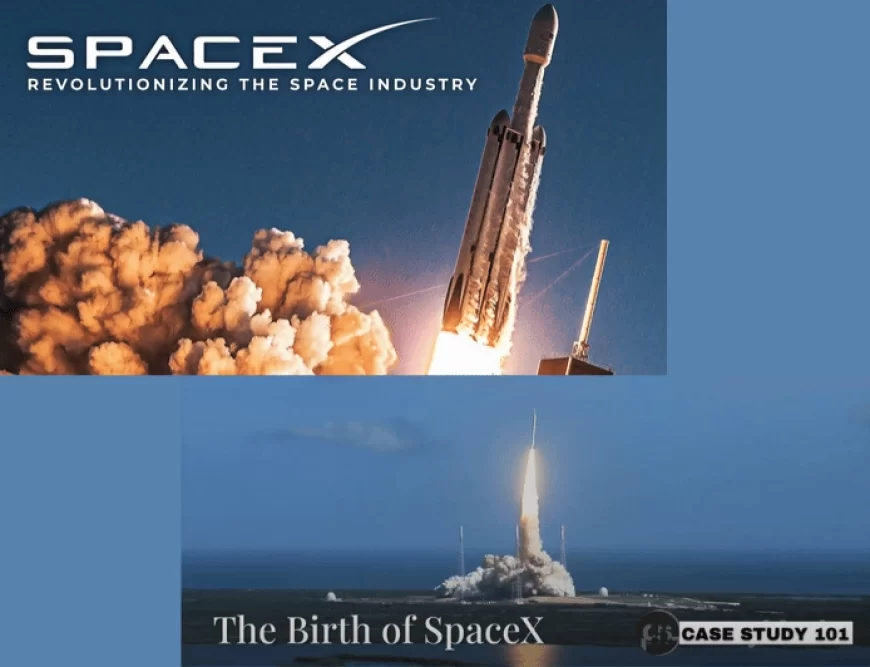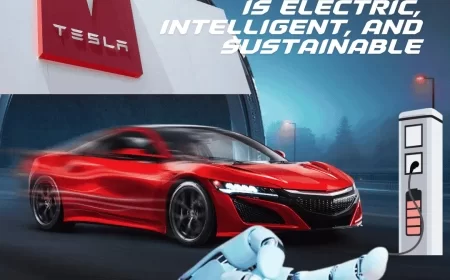SpaceX Revolutionizing Space Travel, Satellites, and the Future of Interplanetary Life
SpaceX is redefining the boundaries of space exploration with innovations like reusable rockets, Starship, and Starlink satellites. Learn how Elon Musk's aerospace company is paving the way to Mars and beyond.

In a world where most private companies struggle to stay grounded, SpaceX dares to dream upward—toward the stars, the Moon, and even Mars. Founded in 2002 by entrepreneur and futurist Elon Musk, SpaceX (Space Exploration Technologies Corp.) has become the global leader in aerospace innovation, fundamentally changing how humans access and interact with space.
With bold missions, reusable rockets, satellite internet, and a long-term vision of colonizing Mars, SpaceX is not just a company—it’s a movement toward humanity’s multi-planetary future.
🚀 A Humble Beginning: The Birth of SpaceX
Back in 2002, space travel was reserved for government agencies. Launching a rocket cost hundreds of millions of dollars, and the technology was fragile, one-time-use, and slow to evolve. Elon Musk envisioned something different: a private company that could build rockets cheaper, faster, and better, with a mission to make life multi-planetary.
He invested $100 million of his own money into what would become SpaceX.
The first few years were rocky—literally. The company’s first three launches of its Falcon 1 rocket failed between 2006 and 2008. But on the fourth try, Falcon 1 reached orbit—a historic first for a privately developed liquid-fueled rocket.
🛰️ Falcon 9: The Workhorse of Modern Space
In 2010, SpaceX introduced the Falcon 9—a larger, more powerful rocket that would go on to become the most flown orbital-class rocket in history. What made Falcon 9 revolutionary was its reusability. Unlike traditional rockets that burn up after use, the Falcon 9 can return to Earth, land vertically, and be launched again.
This innovation slashed launch costs, increased frequency, and ushered in a new era of space commercialization.
As of 2025, Falcon 9 has launched over 300 times, delivering payloads into orbit, transporting astronauts to the International Space Station (ISS), and deploying satellites around the globe.
🌌 Dragon and Commercial Crew Program
SpaceX didn’t just stop at rockets. In 2012, its Dragon capsule became the first private spacecraft to dock with the ISS. Then, in 2020, SpaceX made history again by launching NASA astronauts aboard the Crew Dragon capsule as part of the Commercial Crew Program.
This marked the first time astronauts launched into orbit from American soil since the Space Shuttle's retirement—and the first time ever aboard a privately built spacecraft.
Today, Dragon missions are routine, supplying the ISS and ferrying astronauts on a regular basis.
🛰️ Starlink: Internet from the Stars
One of SpaceX’s most ambitious ventures is Starlink—a global satellite internet network designed to deliver high-speed, low-latency internet to even the most remote areas on Earth.
As of 2025, SpaceX has launched over 5,000 Starlink satellites, providing service to millions of users worldwide. Whether in rural Alaska or on a ship in the Atlantic, Starlink connects people where traditional infrastructure cannot.
Starlink isn’t just about connectivity—it funds SpaceX’s Mars mission. The revenue from Starlink will help pay for future interplanetary exploration.
🚀 Starship: The Mars Mission Begins
The most ambitious rocket ever built, Starship, represents Musk’s ultimate vision: a fully reusable rocket system capable of carrying humans to Mars. Composed of a Super Heavy booster and Starship upper stage, the system can carry over 100 tons to orbit.
Unlike Falcon 9, Starship is designed for deep space missions, lunar landings, and transporting large numbers of people and cargo.
In 2023 and 2024, SpaceX began high-altitude and orbital test flights of Starship. Though still under development, it's already been selected by NASA for Artemis Moon missions and could play a pivotal role in future Mars colonization.
🌕 NASA Collaborations: A Public-Private Partnership
SpaceX has become NASA’s most reliable private partner. Key collaborations include:
-
Commercial Resupply Services (CRS) for ISS
-
Commercial Crew missions
-
Artemis Human Landing System (using Starship for Moon landings)
-
CLPS lunar deliveries for scientific equipment
This partnership has saved taxpayers billions and accelerated timelines for American space missions.
🔄 Reusable Rockets: A Game-Changer
Before SpaceX, launching a rocket was like crashing a jumbo jet into the ocean after a single flight. Musk asked a simple but revolutionary question: Why don’t we land rockets and use them again?
This led to one of SpaceX’s most iconic achievements: landing Falcon 9’s first stage booster vertically on a drone ship in the ocean.
The ability to reuse boosters dozens of times has dramatically reduced launch costs, increased frequency, and made space more accessible than ever.
📡 Starbase: Launchpad to the Stars
SpaceX's Starbase facility in Boca Chica, Texas, is the primary development site for Starship. It’s a unique blend of rocket factory, launch site, and testing ground—all in one.
It’s also a symbol of Musk’s belief in rapid iteration, hardware-in-the-loop testing, and “fail fast, learn fast” engineering culture.
🧠 The Big Picture: Making Life Multi-Planetary
Elon Musk has often said that humanity must become a multi-planetary species to ensure its survival. Whether it’s a killer asteroid, nuclear war, or environmental collapse, Musk believes that Mars is our plan B.
SpaceX exists not just to build rockets, but to build civilization on another world. It’s a lofty goal—but one that is actively being pursued with hardware, software, and global talent.
⚖️ Challenges and Controversies
Despite its many successes, SpaceX faces challenges:
-
Starship regulatory delays (FAA and environmental concerns)
-
Starlink’s effect on astronomy
-
Rocket reentry debris risk
-
Labor and safety criticisms
-
Financial risks from ambitious expansion
Musk’s aggressive timelines and public persona also attract criticism. Still, the company continues to outperform nearly every industry benchmark.
🌍 The Future of SpaceX
Looking ahead, SpaceX is working toward:
-
Dozens of Starship launches annually
-
Crewed Moon landings by 2026
-
First uncrewed Mars cargo mission by 2028
-
10,000+ Starlink satellites in orbit
-
Hypersonic point-to-point Earth transport
The endgame? A self-sustaining city on Mars—with functioning agriculture, housing, industry, and perhaps, one day, millions of people.
✅ Conclusion: A Company That Dared to Dream
SpaceX is no longer just a startup disrupting the aerospace world—it’s a full-scale architect of humanity’s future in space. With every launch, every landing, and every innovation, SpaceX brings us closer to a world where interplanetary life isn’t fiction, but fact.
In a universe that once seemed out of reach, SpaceX is turning the impossible into routine—and the stars into our next destination.
What's Your Reaction?
 Like
0
Like
0
 Dislike
0
Dislike
0
 Love
0
Love
0
 Funny
0
Funny
0
 Angry
0
Angry
0
 Sad
0
Sad
0
 Wow
0
Wow
0





































